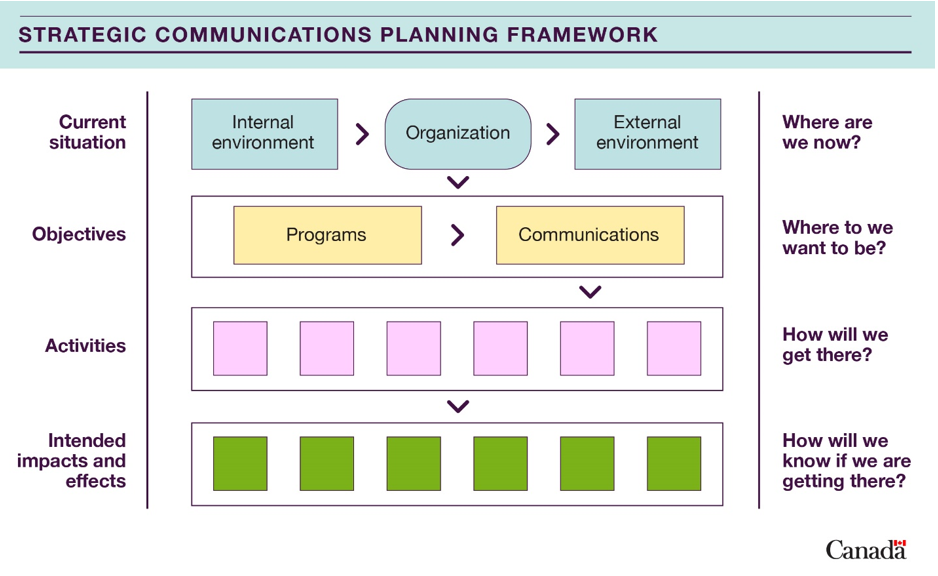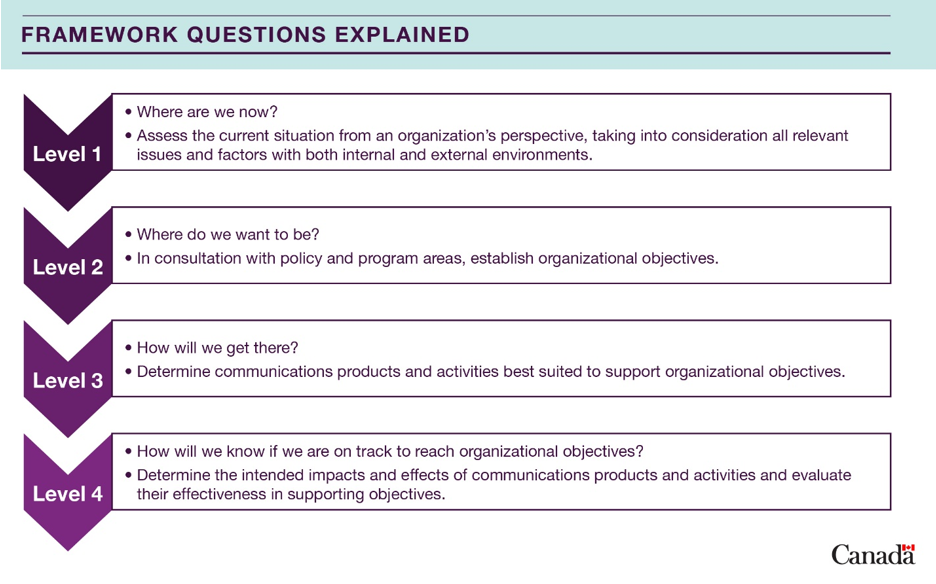Strategic Communications Planning Framework
By: the Government of Canada Communications Community Office with excerpts from the Canada School of Public Service courses
If you ever wonder where to start when developing your strategic communications plan, one of the tools that can be used is the Strategic Communications Planning Framework.
This framework, based on the teachings in the Understanding and applying strategic communications: participant’s manual by the Canada School of Public Service, includes 4 fundamental questions that govern strategic communications planning in the public service. These questions establish the road map to develop a strategic communications plan.
Strategic Communications Planning Framework

Text version - Strategic Communications Planning Framework
Current situation: Internal environment ➜ Organization ➜ External environment ➜ Where are we now?
Organization ➜ Objectives
Objectives: Programs ➜ Communications ➜ Where do we want to be?
Communications ➜ Activities
Activities ➜ How will we get there?
Intended impacts and effects ➜ How will we know if we are getting there?
This simple model allows you to create an overview of the strategy on a single page. By linking the communications strategy with corporate objectives and the broader government context, you can show how the strategy integrates with, and supports the organization’s overall direction.
The framework demonstrates how communications work is both strategic and supportive of the organization’s overall direction (mission, mandate, priorities). It also establishes objectives, activities, and methods of evaluation. A plan is only strategic if it makes links and adjusts for potential risks and opportunities.
Use these simple questions to help plan your next communications strategy:
- Where are we now?
- Where do we want to be?
- How will we get there? What could stop us from getting there?
- How will we know if we are getting there?
Framework questions explained

Text version - Framework questions explained
Level 1:
- Where are we now?
- Assess the current situation from an organization’s perspective, taking into consideration all relevant issues and factors with both internal and external environments.
Level 2:
- Where do we want to be?
- In consultation with policy and program areas, establish organizational objectives.
Level 3:
- How will we get there?
- Determine communications products and activities best suited to support organizational objectives.
Level 4:
- How will we know if we are on track to reach organizational objectives?
- Determine the intended impacts and effects of communications products and activities and evaluate their effectiveness in supporting objectives.
References
- T712 Understanding and applying strategic communications: participant’s manual version 1.03, Canada School of Public Service, 2004 (Revised December 2014).
Page details
- Date modified: